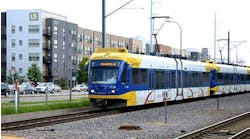The steady growth of immigration to this country makes it likely that many immigrants will move here from Latin America over the next four decades. A significant percentage of these individuals will have limited financial means, and will rely on public transit, walking, and bicycles to get from place to place. National surveys and qualitative analyses have been used in the past to track the travel needs of low-income groups, but these have not been completely effective in distinguishing travel patterns among those who are not just lower in income, but also immigrants to this country.
In order to make sure that this particular segment is accounted for in transit planning, a study was implemented in two parts. First, a series of interviews were conducted with 14 low-income immigrants in which concerns were identified regarding transit use and the use of cycling to access transit. Second, a survey was implemented that deliberately oversampled low-income immigrants, and was administered to 2,078 adults in the San Francisco Bay Area. Qualitative and quantitative data were examined by the investigators.
The study, Exploring Bicycle and Public Transit Use by Low-Income Latino Immigrants, was authored by Jesus M. Barajas, MURP, Daniel G. Chatman, PhD and Asha Weinstein Agrawal, PhD.
Three key findings stood out:
- There were five major barriers to public transit use among low-income immigrants: safety concerns, discrimination, transit costs, the legibility of transit operations, and the reliability of the systems in place. Crime was by far the worst barrier to use of public transit in interviews: nearly every interviewee told a story about violence or harassment that occurred when public transit was being used. Survey respondents, however, were more likely to cite costs as the main barrier to transit use.
- Low-income immigrants were less likely than those with higher incomes to have access to a motor vehicle. They were also less likely than U.S.-born or higher-income immigrants to have access to a bicycle, or to have bus passes.
- Low-income immigrants were much less willing to substitute taking public transit for driving when they had the option to drive, which suggests that they obtained car access for particular purposes not served by transit, or that their experiences on public transit have been unpleasant. They were also less willing to ride their bicycles for any trip purpose, a finding that is contrary to claims in other published research. The exception was respondents surveyed at day labor sites, who more frequently rode bicycles.
Mr. Barajas points out that the study results yield a number of implications for policy. “The fact that we heard so many concerns about transit affordability, crime, and reliability suggests that transit agencies should consider income-based fare reductions, coordinated crime prevention with local law enforcement, and improved scheduling,” he said. “A significant minority of transit riders value bicycle access to transit, suggesting that it makes sense to invest more in bike-transit integration. And because immigrant travel habits and experiences are sometimes quite significant, travel surveys should do a better job of collecting data on immigrant status.”
For a free, no-registration download, go to http://transweb.sjsu.edu/project/1202.html.

